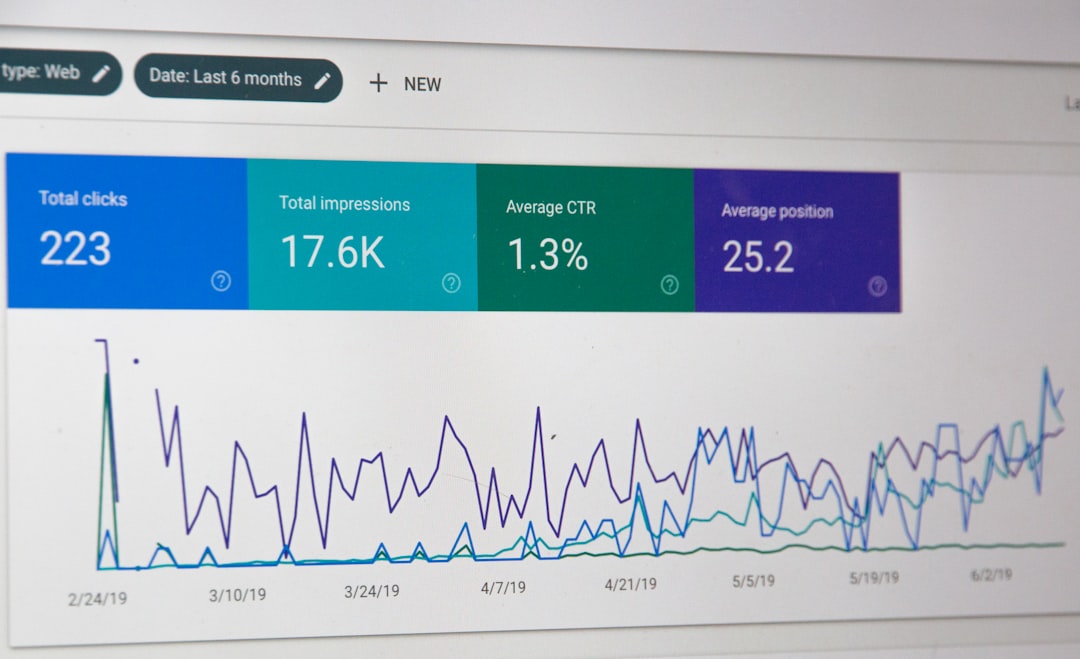In the ever-evolving landscape of web development and digital marketing, the user experience has emerged as a pivotal factor influencing website performance and search engine optimization (SEO). Among the various metrics that gauge user experience, Core Web Vitals have gained significant prominence. Introduced by Google, these metrics serve as a benchmark for assessing the quality of user interactions on a webpage.
They focus on three primary aspects: loading performance, interactivity, and visual stability. As the digital ecosystem continues to mature, understanding and optimizing these Core Web Vitals has become essential for webmasters, developers, and marketers alike. The introduction of Core Web Vitals is not merely a technical adjustment; it represents a paradigm shift in how websites are evaluated.
Google’s emphasis on these metrics underscores the importance of delivering a seamless and engaging user experience. As search engines evolve to prioritize user satisfaction, the implications for website owners are profound. Websites that fail to meet these standards risk being penalized in search rankings, while those that excel can enjoy enhanced visibility and user engagement.
This article delves into the intricacies of Core Web Vitals, exploring their metrics, significance for SEO, impact on user experience, strategies for improvement, and real-world applications.
Key Takeaways
- Core Web Vitals are a set of specific factors that Google considers important in a webpage’s overall user experience.
- The three core web vitals metrics are Largest Contentful Paint (LCP), First Input Delay (FID), and Cumulative Layout Shift (CLS).
- Core Web Vitals have a direct impact on SEO rankings, as Google has announced that they will be included as ranking signals in 2021.
- Improving Core Web Vitals can lead to better user experience, including faster page load times and reduced unexpected layout shifts.
- Strategies for improving Core Web Vitals include optimizing images and videos, minimizing third-party scripts, and utilizing browser caching.
Understanding the Three Core Web Vitals Metrics
Loading Performance: Largest Contentful Paint (LCP)
Largest Contentful Paint (LCP) measures the time it takes for the largest visible content element on a webpage to load. Ideally, this should occur within 2.5 seconds of the page starting to load. A slow LCP can lead to user frustration and increased bounce rates, as visitors may abandon a site that takes too long to display its primary content.
Interactivity: First Input Delay (FID)
First Input Delay (FID) assesses interactivity by measuring the time from when a user first interacts with a page (such as clicking a link or tapping a button) to when the browser is able to respond to that interaction. A good FID score is under 100 milliseconds. If this delay is longer, users may perceive the site as unresponsive or sluggish, which can detract from their overall experience.
Visual Stability: Cumulative Layout Shift (CLS)
Cumulative Layout Shift (CLS) evaluates visual stability by quantifying how much visible content shifts during the loading phase. A CLS score of less than 0.1 is considered optimal. High CLS values can lead to accidental clicks and user frustration, as elements on the page may move unexpectedly while users are trying to interact with them.
Importance of Core Web Vitals for SEO Rankings

The significance of Core Web Vitals extends beyond mere performance metrics; they play a crucial role in determining a website’s SEO rankings. Google has explicitly stated that these metrics are part of its ranking criteria, meaning that websites with poor Core Web Vitals scores may find themselves at a disadvantage in search results. This shift towards prioritizing user experience reflects a broader trend in SEO where search engines increasingly value sites that provide fast, responsive, and visually stable experiences.
Moreover, as competition intensifies across various industries, optimizing for Core Web Vitals can provide a competitive edge.
For instance, if two websites offer similar content but one has superior Core Web Vitals scores, it is likely that the better-performing site will rank higher in search results.
This correlation between user experience and SEO underscores the necessity for webmasters to focus on optimizing their sites for these critical metrics.
How Core Web Vitals Affect User Experience
User experience is fundamentally intertwined with how effectively a website meets the expectations of its visitors. Core Web Vitals directly influence this experience by addressing key pain points that users encounter while navigating online. For example, a website with a slow LCP can lead to immediate dissatisfaction; users expect content to load quickly and may leave if they perceive delays.
This impatience is particularly pronounced in mobile environments where users often have limited time and attention spans. Interactivity is another critical component of user experience affected by FID. A high FID can create a perception of sluggishness, leading users to believe that their actions are not being registered promptly.
This can be particularly detrimental for e-commerce sites where quick interactions are essential for completing transactions. Similarly, CLS impacts how users perceive the stability of a webpage. If elements shift unexpectedly while they are trying to read or click on something, it can lead to frustration and confusion.
By focusing on improving these metrics, website owners can create a more enjoyable and efficient browsing experience that encourages users to stay longer and engage more deeply with their content.
Strategies for Improving Core Web Vitals
Improving Core Web Vitals requires a multifaceted approach that encompasses various aspects of web development and design. One effective strategy for enhancing LCP is optimizing images and videos on the site. Large media files can significantly slow down loading times; therefore, using next-gen formats like WebP or AVIF can help reduce file sizes without sacrificing quality.
Additionally, implementing lazy loading techniques ensures that images load only when they enter the viewport, further improving perceived loading speed. To address FID, developers can minimize JavaScript execution time and optimize event handlers. Reducing the amount of JavaScript that runs during page load can help ensure that the browser remains responsive to user interactions.
Techniques such as code splitting and deferring non-essential scripts can significantly enhance interactivity. For CLS, ensuring that dimensions are set for images and other media elements can prevent layout shifts as content loads. Using CSS to reserve space for dynamic elements like ads or pop-ups also contributes to a more stable visual experience.
Monitoring and Measuring Core Web Vitals

Google’s Tools for Measuring Core Web Vitals
PageSpeed Insights offers detailed reports on LCP, FID, and CLS along with suggestions for improvement. Lighthouse provides an in-depth analysis of performance across various categories, including accessibility and best practices.
Third-Party Services for Comprehensive Insights
In addition to Google’s tools, third-party services like GTmetrix and WebPageTest offer valuable insights into Core Web Vitals performance. These platforms allow users to simulate different network conditions and devices, providing a comprehensive view of how a site performs under various circumstances.
The Importance of Regular Monitoring
Regular monitoring enables webmasters to identify trends over time and make informed decisions about optimizations based on real user data.
Case Studies of Websites with Improved Core Web Vitals
Several notable case studies illustrate the tangible benefits of optimizing Core Web Vitals. For instance, a leading e-commerce platform undertook a comprehensive overhaul of its website to improve its LCP score. By optimizing images and implementing lazy loading techniques, they reduced their LCP from over 4 seconds to under 2 seconds.
This improvement led to a 20% increase in conversion rates as users found it easier to navigate the site without delays. Another example involves a news website that faced high bounce rates due to poor interactivity scores. By streamlining their JavaScript code and optimizing event handling processes, they managed to reduce their FID from 300 milliseconds to just 50 milliseconds.
As a result, user engagement increased significantly; readers spent more time on articles and interacted more frequently with embedded multimedia content. These case studies highlight not only the technical aspects of improving Core Web Vitals but also the direct impact such improvements can have on business outcomes. The correlation between enhanced performance metrics and increased user engagement underscores the importance of prioritizing these factors in web development strategies.
Conclusion and Future Trends in Core Web Vitals and SEO
As we look ahead, it is clear that Core Web Vitals will continue to play an integral role in shaping SEO strategies and user experience design. With Google’s ongoing commitment to enhancing search algorithms based on user satisfaction metrics, website owners must remain vigilant in monitoring their performance against these standards. The evolution of web technologies will likely introduce new tools and methodologies for optimizing Core Web Vitals further.
Moreover, as mobile usage continues to rise globally, optimizing for mobile-first experiences will become increasingly critical. Future trends may include greater emphasis on real-time performance monitoring and adaptive design strategies that cater specifically to varying device capabilities and network conditions. As businesses strive to meet user expectations in an increasingly competitive digital landscape, those who prioritize Core Web Vitals will be well-positioned to thrive in the future of online engagement and search visibility.
If you’re interested in learning more about how to improve your website’s SEO rankings, you may want to check out the article “Hello World: A Beginner’s Guide to SEO” on influencer-database.com. This article provides valuable insights and tips for those who are new to the world of search engine optimization. By implementing the strategies outlined in this article, you can enhance your website’s visibility and attract more organic traffic.
FAQs
What are Core Web Vitals?
Core Web Vitals are a set of specific factors that Google considers important in a webpage’s overall user experience. These factors include loading performance, interactivity, and visual stability.
How do Core Web Vitals impact SEO rankings?
Google has announced that Core Web Vitals will become a ranking factor in its search algorithm starting May 2021. Websites that provide a better user experience in terms of Core Web Vitals are likely to see a positive impact on their SEO rankings.
What are the specific Core Web Vitals metrics?
The specific Core Web Vitals metrics include Largest Contentful Paint (LCP), which measures loading performance, First Input Delay (FID), which measures interactivity, and Cumulative Layout Shift (CLS), which measures visual stability.
How can I improve my website’s Core Web Vitals metrics?
To improve Core Web Vitals metrics, website owners can focus on optimizing loading times, minimizing render-blocking resources, ensuring responsive design, and avoiding unexpected layout shifts.
What tools can I use to measure Core Web Vitals metrics?
Google provides several tools for measuring Core Web Vitals metrics, including PageSpeed Insights, Lighthouse, and Search Console. These tools can help website owners identify areas for improvement.















